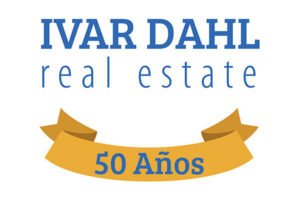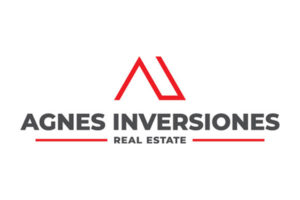- How did it all begin for you?
- How would you describe your style of architecture?
- Have you seen many changes over the past quarter century?
- Why did this happen, do you think?
- How were you affected by the recession?
- Can you tell us more about how your involvement in the Vista Lago project came about?
- How important is the environment and sustainability in all of this?
- How minimalist are you as architects?
- And finally, how important is it for you to design locally?
Interview with Rodolfo Amieva Jacobson, co-founder of the architectural firm González & Jacobson, the architects working alongside UDesign on the design and development of BRIGHT’s innovative Vista Lago Residences.
Interview by Vivion O’Kelly. Images courtesy of González & Jacobson.

Architecture is a risky business. The mere survival of an architectural firm is now a mark of success, and to survive and thrive for a quarter of a century is a sign of excellence. The Marbella-based architectural firm González & Jacobson is one of the few that have done just that. We spoke to Rodolfo Jacobson about the company he represents and the way they work, about architecture in general, and about their latest projects in Marbella.
How did it all begin for you?
Our story began when Carlos González and I founded the company in the mid 1990s. With the economic crisis of 2008, we decided to open an office in Mexico and Carlos moved there. I then teamed up with Seville-born architect Diego Macías Dominguez, and we now have 20 people working in the company. In that time we’ve worked on numerous major projects, not only in Spain and the Marbella area, but all over the world, in countries such as Nigeria, Angola, Brazil, Mexico and Norway.
How would you describe your style of architecture?
I wouldn’t say we follow a well-defined line in architectural practice, because we also have to work to our clients’ wishes, and are very happy to do so. We’re not the kind of architects who have a set style and are not willing to change. But at the end of the day, that’s one of the reasons for our success. I cannot complain.


Architecture itself has changed a lot, and so have we. The most important change has been increased respect for the environment, followed by sustainability.
Have you seen many changes over the past quarter century?
Architecture itself has changed a lot, and so have we. The most important change has been increased respect for the environment, followed by sustainability. When we started out all those years ago, nobody was thinking much about these two issues, and now, all our clients demand them.
Another big change was in the style of architecture of the end of the last century. It was almost all the traditional Andalusian style, although I have to add, it was not really the genuine article. Everybody wanted open views to the sea and lots of glass everywhere, and that was certainly not the traditional style of this region. So we found ourselves trying to both please the client and maintain some semblance of tradition in our work. We also had very many people coming from abroad with their own ideas about architecture, and they wanted to incorporate these ideas into the local style. We were forced to innovate, to anticipate our clients’ demands, and we did.
But maybe the biggest change of all happened as a result of the economic crisis of 2008, which affected our profession in a big way. After that, people in general had more information, more access to new designs, than before. They began asking for a more modern style, in some cases demanding a type of architecture that is simply not feasible in this part of the world. Before the crisis, we were doing that kind of traditional architecture, and then they wanted to know nothing about tiles on the roof, traditional molding or traditional materials.
Why did this happen, do you think?
Well, it appeared to happen as a result of a period of relative inactivity in home construction following the crisis. It was not so much a transition from one style to another, but a rather abrupt change in taste. People were happy enough in the past with the white shoebox type of house that was so ubiquitous on the coast, and then they wanted something a lot more modern in style.

How were you affected by the recession?
For sure, there was not much work in the Marbella area at that time, and many architectural firms went bankrupt, but we decided to branch out into other countries, to export, so to speak. That’s how we survived the crisis.
Can you tell us more about how your involvement in the Vista Lago project came about?
The first project in La Quinta was Los Olivos, which we designed. Having spent two or three years prior to that trying to design the most modern houses, we realized this style was not going to last forever. We would have to look ahead, to anticipate demand in the future. Then, when La Quinta offered us the opportunity to present ideas, we had lots of them. We realized we could keep many of the traditional elements used in the past, but make changes to the process of construction. The concrete, the tiles, the wood, for example, were all used in new ways. It was a great success, and when the chance to design phase two arose, we were happy to take it. This was basically an extension of the first part, but very difficult at the same time. We didn’t change the raw materials we used, but changed the way we used them, using white rather than grey concrete, changing the shape of the buildings for better construction with lighter materials, changing the stone we used before, which we had found locally. And that led, through Quercus, to Vista Lago Residences.

Sustainability is something we believe firmly in, not just because it is good for the future of the world and all that, or that is politically correct, but also because it reduces the cost of maintaining the house in the future.
How important is the environment and sustainability in all of this?
As you can see from the entire Vista Lago project, the question of the environment is of prime importance. It just happens that the other founder of the company, Carlos González, is a landscape architect, and all our projects reflect this. In the case of Vista Lago as well, we had to examine closely what was happening around us, and how we might take full advantage of what was there – the best views, the best orientation, trying to minimize the impact of the house, and the road, on the natural terrain.
Sustainability is something we believe firmly in, not just because it is good for the future of the world and all that, or that is politically correct, but also because it reduces the cost of maintaining the house in the future. We have certain criteria we follow as we design, in an attempt to maximize the efficiency of the house. We’ve created cross-ventilation, created large areas of shade with big cantilevers, large canopies and so on.
How minimalist are you as architects?
Well, minimalist… just how minimalist can you get? What about photographs on the wall? Genuine minimalism prohibits this. In our case, we don’t set out to create minimalist architecture, but at the same time we’re opening spaces and designing windows you can’t really see, so that is minimalism too. The exterior is a reflection of the interior, and in our exteriors, we remove all non-essential elements. We don’t play with spaces by filling them up, so in that sense, you could indeed call us minimalist.

The most important thing for an architect is to have the utmost respect for his surroundings, wherever he is.
And finally, how important is it for you to design locally?
I believe it’s very important to design locally. We must remember that most of the great architectural projects in history were designed locally. But of course the world has changed and we don’t have the same distant barriers as before, so local really doesn’t exist anymore. The world is now global. The most important thing for an architect is to have the utmost respect for his surroundings, wherever he is. Really great architecture usually follows in the tradition of the area, and I think any architectural firm would be happy to design locally, to leave a footprint on the future of the area they work in. We are certainly happy to work in this region, and much of what architects do here has become a reference for the rest of the world.
Find out more about Vista Lago Residences by visiting our information page



































































